Which heating radiators are better than cast-iron or
Radiators connected to a centralized heating system sometimes have to undergo very high loads. Therefore, the only materials that can withstand high pressure and not collapse from corrosion are cast iron and bimetal (steel and aluminum). The latter in appearance resemble aluminum heaters. For the right choice of equipment, it is worth considering the characteristics of both in more detail.

Constructive and external differences
Before going to the store, we recommend that you familiarize yourself with the characteristics of the models, and then it will be easier for you to decide whether it is better to install cast-iron or bimetallic heating radiators in your home:
| Cast iron |
|
| Bimetal |
|
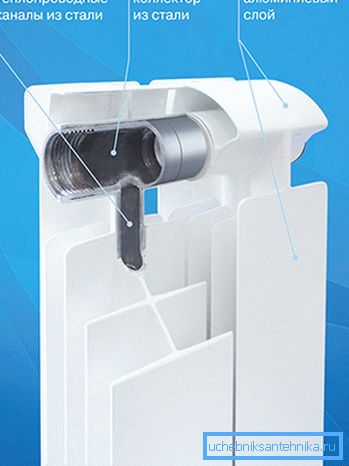
Heat transfer performance
Cast iron first:
- Heats up very slowly, but in the event of a heating shutdown he is able to maintain his temperature for a long time.
- Such radiators warm the air in two ways:
- convection;
- radial.
This means that when they work, not only the air is heated, but also nearby objects.
- The heat output of the radiator is always indicated for one section and, depending on the model, can vary from 100 watts to 160 watts.
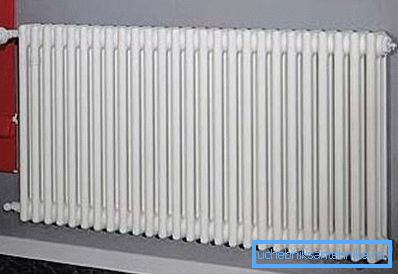
Now bimetallic models:
- Unlike cast iron, they heat up almost instantly, but also instantly cool.
- Radiation energy devices emit much less, therefore, nearby objects are practically incapable of heating.
- Most of the heat in the room comes from convection.
- Their heat output also depends on the type of model and can be from 150 W to 180 W in each section.
- Their only advantage, compared with traditional cast iron, is the speed of heating.
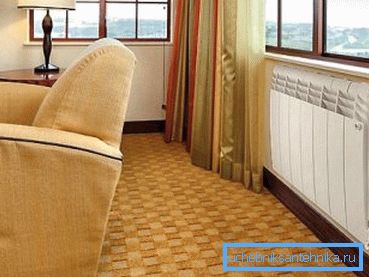
So, in this case, it is difficult to say that bimetallic or cast iron radiators are better. It all depends on how often you have failures in heating the house.
Pressure readings
In apartments of multi-storey buildings, devices should be installed that can withstand not only high pressure, but also its drops. Otherwise, when the supply of hot water stops suddenly, the batteries may get a water hammer, with the result that they are able to burst, with all the ensuing consequences.
Therefore, when choosing a cast iron or bimetallic radiator, consider the following:
- The maximum pressure that cast iron is able to withstand is 9-12 bar, which is not very much. And in the event of the above situation, the battery may burst.
- No water hammer is dangerous to bimetallic radiators, since their technical parameters are higher, which allows them to withstand a pressure of 20-50 bar.
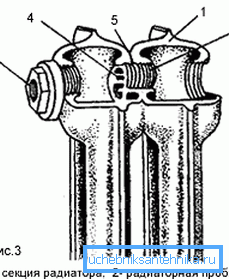
Resistant to coolant
High pressure and its drops are not the only problem of centralized heating systems. Another problem is the poor quality of the coolant. In addition to the content of various chemical compounds, tiny particles of sand and pebbles enter the batteries along with water.
So which radiator is better bimetal or cast iron in this case?
Consider below:
- Cast iron does not react chemically., therefore, the presence of any chemical compounds does not threaten him. It does not corrode even in summer, when water is drained from pipelines. However, small pebbles are capable of making the metal thinner over time, but if the walls of the battery are thick enough, small particles will not be intimidated by the device.
- Resistant to chemicals and bimetall. But his problem is that when summer water is drained from the pipeline, there remains air in the radiators, which can damage the steel core.
Tip: if you periodically drain water from the heating system, it is better to opt for cast iron batteries, in this case they are much more durable.
Strong heat and temperature drops
In urban heating systems, instability is observed not only in pressure, but also in the temperature of the coolant supplied.
And here you should know what to expect from both types of radiators, and whether they can withstand too much heat:
- The highest temperature that the cast iron radiator can withstand is 110 ° C.
- For a bimetallic device of heating, this indicator is slightly higher and amounts to 130 ° C.
However, both of them are capable of enduring temperature drops without serious consequences, therefore there are no losers here. It should be noted that steel and aluminum have different extensions. Because of this, in the case of an abrupt change in temperature, the bimetallic radiator can emit crackles.

Tip: bimetallic device can be used in autonomous heating systems.
Life time
If during operation to maintain the cast iron battery in proper condition - periodically wash it, it can survive a change of several generations. No wonder in many old houses some not less ancient specimens have been preserved.
As for the bimetal radiator, the sectional model instruction assigns about 15-20 years. Monolithic specimens are able to outlive their brethren by another 5 years. Therefore, here modern bimetallic batteries lose significantly.
Installation: which is easier
To understand this, it is enough just to take both radiators in turn.
Of course, problems will arise much more with the installation of a cast iron product:
- one person to raise a full-size battery is very problematic;
- it should be mounted on special brackets capable of withstanding such a load, and on the main wall.
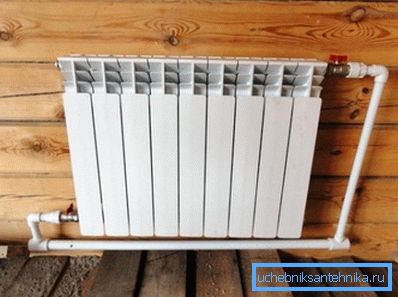
For example, the weight of a bimetallic radiator is able to withstand even a plasterboard partition.
Conclusion
It follows from the above that the final choice of a consumer, first of all, depends on his desires. If durability is required, you need to buy cast-iron models. Well, and when simplicity and speed of installation are in priority - the bimetal radiator will be the ideal choice.
The video in this article will allow you to find additional information on the above topic.